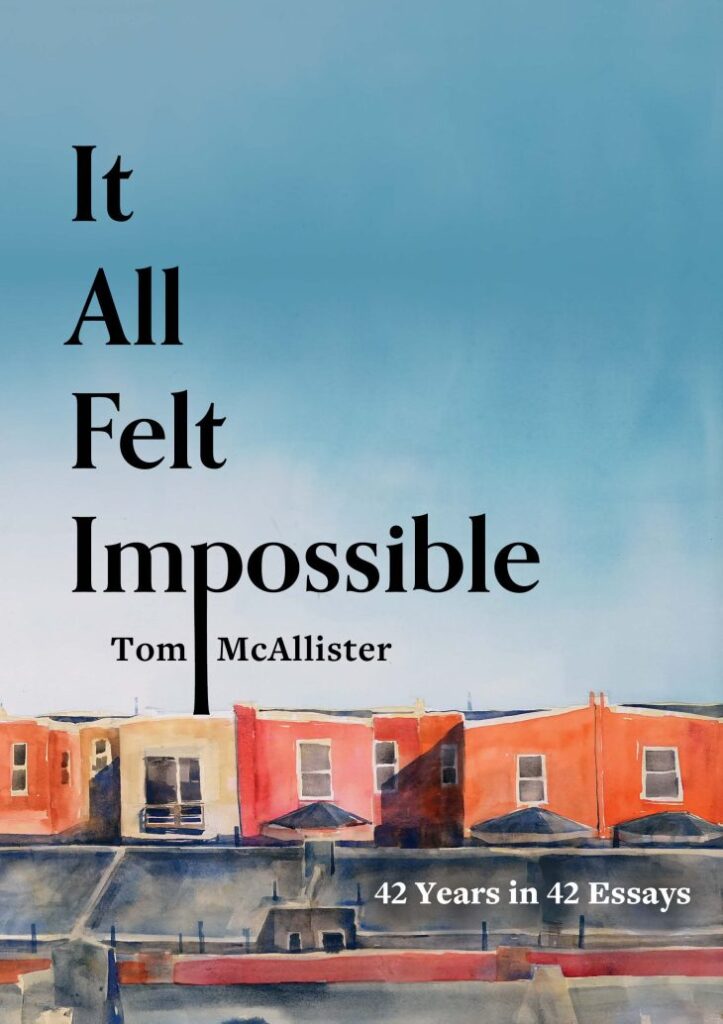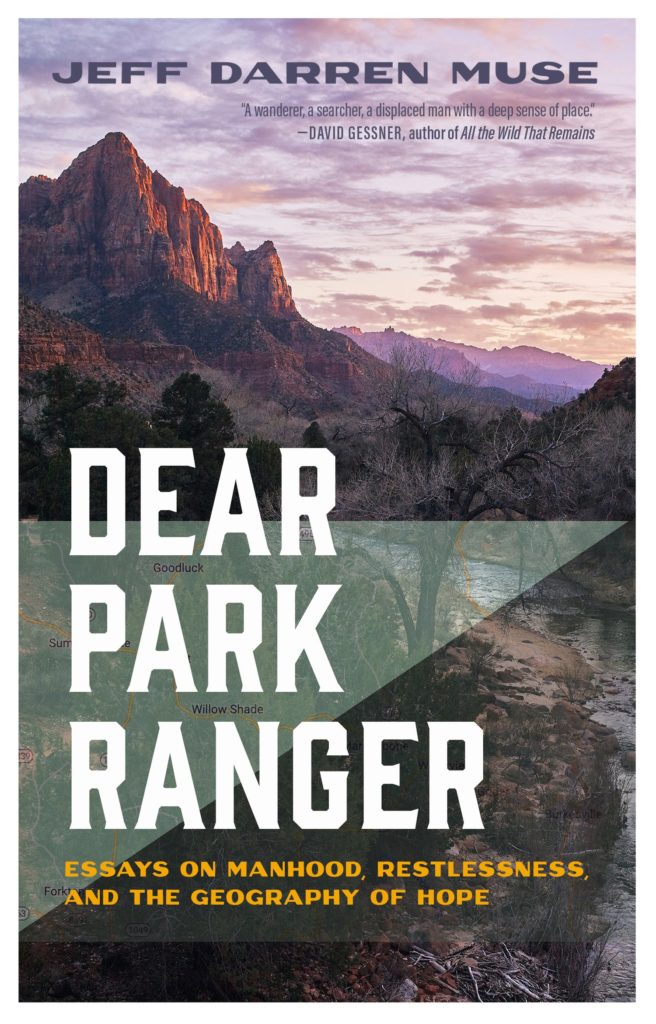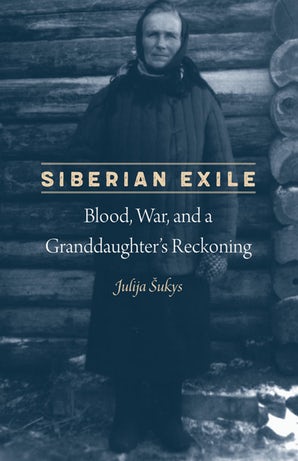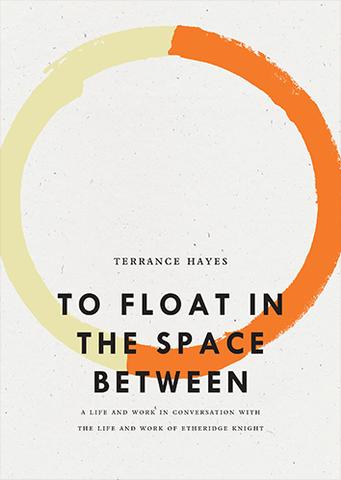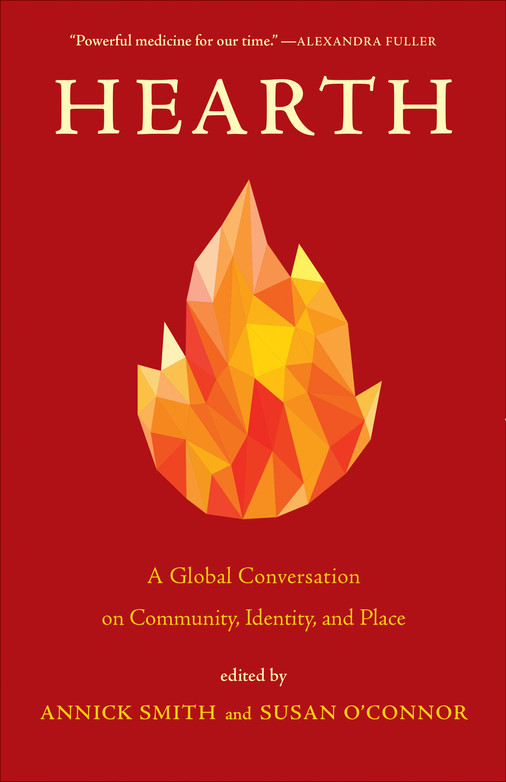By Beth Alvarado
When I was sending out an early version of my manuscript, Anxious Attachments (2019), several agents, who were all interested in the book, asked me to revise it so it would be a “memoir in essays” and not an essay collection, as I thought of the book. They said it would be more marketable as a memoir. I dismissed the idea almost immediately. Since the events in the essays had taken place over the last forty years, since the topics in the essays were various, and since, in the twenty years of writing about those events, my style had evolved, the request seemed both impossible and artificial. Anxious Attachments was definitely a collection. Not a memoir. For one thing, not all of the essays were “about” me. Plus, as one agent pointed out, the collection “did not respect” chronological time, not only from essay to essay but within each essay. Did this mean I would have to pull individual essays apart and rearrange their parts into a narrative that “respected” chronological time?
My mind and my writing style do not function in a linear manner. Instead, both leap from moment to moment associatively. I’d already written a memoir, Anthropologies, a collection of short vignettes, almost prose poems, arranged to recreate the associative movement of the mind as it remembers. In fact, for me, that was what the memoir was about: the act of remembering was much more important to me than what I was remembering. The book worked, I think, because the vignettes resonated with one another and they accrued meaning. There was a through-line. The reader never sank into one episode for long and instead could hold several in her mind at once. The reader—at least this is what I hoped—could construct a narrative as she read, just as we do in remembering.
But most of the essays in Anxious Attachments were longer segmented narratives—several had begun with moments in the earlier book, moments that could not be contained within the formal constraints I had set up. Although there were thematic connections among the essays, each had its own topical focus, each its own set of constraints, and each its own self-referentiality.
One agent also felt that there was no “aboutness” to my essay collection—except that many were about taking care of other human beings, the dying and the newly born, in moments of extremis. That seemed pretty “about” to me; in fact, I gratefully used it as a guiding principle during revision. This is where the expertise of Christine Stroud, the editor at Autumn House Press, the book’s eventual publisher, helped me shape the collection. First, with a central thematic thread in mind about life and death, we cut a few essays, I wrote a few new ones, we reorganized the order of the essays, and then I revised several of them to pare down details that might detract from the main themes of anxiety and devotion.
Although the essays were still about various topics, these main themes were now in higher relief: They tied the essays together, increased their resonance, and suggested a narrative arc of sorts—although I would not say that a narrative through-line emerged. Also, some essays were formally different from others, either in structure or style, partly because the essays had been written over many years. I liked these stylistic variations and so, for the most part, as long as the voice was consistent and the essays riffed on the central themes, I decided to keep the formal idiosyncrasies.
I came up with a couple statements that crystallized an overall theme. “These essays are about the opposite poles of life—birth and death—about the struggle of caring for premature infants and of tending to the dying.” And: “These essays vividly recreate moments from the forty years of our marriage and tell a larger narrative about the power of love to revise who we are, what we believe, and what our stories are.”
After I handed the final manuscript off to Christine, I read I Am, I Am, I Am by Maggie O’Farrell, a book marketed as a memoir. Because each of O’Farrell’s chapters could stand on its own and because the book is not a long-form narrative, I started to think of it as a collection of essays or as a phrase currently in vogue, memoir in essays. Whether that is what the author intended, in reading it, I saw what agents might have wanted from me. O’Farrell’s was a moving and well-written book with a clear and easily identifiable “aboutness,” one that requires not even a full sentence but can be summed up in a phrase: the author’s “seventeen brushes with death.”
O’Farrell’s events span at least forty years, from her childhood through her adolescence and into middle-age; they end with a life-threatening ailment her daughter suffers. The essays—I will call the chapters “essays” and, in fact, a few were first published as such—are self-contained, not arranged in chronological order, although each is clearly placed in time so there’s never any chronological confusion. The narrative arc in each essay rises, almost as it might in a novel, the genre O’Farrell most often writes—although, as I said, there is no narrative arc to the book itself.
For me, though, there is too much structural consistency from essay to essay in I Am, I Am, I Am. In most, the moment of the close encounter with death, whether by illness or accident or a predatory male, comes very near the beginning, the essay then flashes back to what has led to this moment, then comes to a resolution. As much as I admired everything else about the book—the vivid prose, the ways characters were developed and events rendered, the emotional insights—this structural consistency began to feel not only predictable but also as if O’Farrell censored herself from following digressions or making larger connections. Only in the last two longer essays, “Cerebellum (1980)” and “Daughter (The present day),” did she take advantage of the things I love most about the essay form—its elasticity and riffing on associative thought.
In some ways, I think the memoir in essays is a mythical creature. But, for comparison’s sake, I’m calling I Am I Am I Am a memoir in essays—because the “aboutness” is autobiographical and because without an over-arching narrative its thematic emphasis nevertheless unifies the various stand-alone parts.
Maybe we need a better term than memoir in essays. Maybe the term is merely for marketing and too broad as a definition. Maybe finer distinctions will lead to new terms, especially if those terms are descriptive or generative, rather than proscriptive. Like the essay form itself, the essay collection, in several distinctively diverse and recent books, is fastly evolving with subtle differences, resisting a singular form.
Essay Cycles
I needed to start somewhere, so I began with a term of my own, essay cycle: a collection of essays, closely related to one another, whether by topic or theme or formal qualities. For instance, with fiction, if someone said, “This is a short story cycle,” rather than a collection of stories or a novel, we understand that the stories, according to Wikipedia, are “specifically composed and arranged with the goal of creating an enhanced or different experience when reading the group as a whole as opposed to its individual parts.” We do not expect a unifying narrative or even, necessarily, a focus on any one character or any one place. Instead, we would expect a collection of stories where characters and themes recurred and resonated with one another.
Using fiction, consider the differences between Tim O’Brien’s The Things They Carried, a story-cycle, thematically unified by the individual soldier’s burden, where characters and locales and even formal qualities of each story vary, and Elizabeth Strout’s Olive Kitteridge, where the stories in the collection are united by place, recurring characters, and formal consistency. The range is ample, allowing for all sorts of variations.
So, taking a cue from fiction, what happens when the “aboutness” of the essay collection is not strictly autobiographical and when events or circumstances of the author’s life are used to ground her inquiry and reflect on larger social, political, and cultural domains? This is where the term essay cycle might be a more useful descriptor—useful to a writer in-process as well as to the publishing industry. As someone who teaches nonfiction at the graduate level, I often ask students to discuss their theses-in-process: Are you thinking that this will be a collection of essays of various topics and formal qualities or a sustained project? To help, I use essay cycle to indicate a collection that is guided by a central line of inquiry and where there is some formal consistency among the essays.
Since these are the qualities that Christine asked me to emphasize in the revision of Anxious Attachments—to create thematic and formal consistency—I decided to read (or reread) recent essay collections with this hypothesis in mind. I concluded that Lacy M. Johnson’s The Reckonings and Esmé Weijun Wang’s The Collected Schizophrenias are clear examples of essay cycles.
In these books, the essays are thematically connected, although the topics of the essays may vary. Also, in each, there is a structural or formal consistency among the essays themselves that makes the collection cohesive, makes the reader feel that the writer may have intended a sustained inquiry into the subject.
In The Reckonings, the impetus for Johnson’s inquiry is grounded in the first essay. In it, she recounts how she is asked, often by women, what should happen to her former boyfriend who abused and tried to kill her before escaping justice by fleeing to Brazil, a dark tale she explored in her brilliant memoir, The Other Side. Some women assume she wants retribution or revenge; however, she says, “I want a long line of reckonings. I want the truth told back to us. I want the lies laid bare.” In other words, instead of retribution, she wants a reckoning to bring about cultural and political change. Her desire for truth-telling extends, in other essays, to related topics: whiteness, the penal system, environmental degradation. But the central theme is to explore revenge, retaliation, and justice as reckonings in different contexts.
Diagramming Johnson’s book, I see its development as horizontal and Wang’s The Collected Schizophrenias as vertical. In other words, if we use the metaphor of “mapping,” Johnson’s book describes the “lay of the land” as far as the theme of reckoning Wang’s is like a vertical mining of schizophrenia. Wang travels, ever more deeply and narrowly, from the first researched essay on medical definitions to more personal essays about the ways her own diagnoses have manifested and morphed throughout her life to the final essay on the spiritual dimensions of illness. Using her own life and experiences as starting point and frame, Wang gives us a deeper understanding of the complexities of mental illness, of the complications of its treatments, and of the ways mental and physical illnesses are connected. In the end, she questions the ways Western culture defines the mind/body split.
In Johnson and Wang, the individual essays are fairly straightforward segmented narratives, although variations exist so that none feels predictable. The differences in essay structure may arise from purpose: neither author uses the essay to tell a narrative in the way that O’Farrell does. Rather, each employs narrative as one way of grounding her exploration in the personal. Both incorporate research and references to other texts, rather than relying solely on their own experiences.
This method of cycling out of and back into the narrator’s experiences makes their books feel as personal or memoir-like as they feel reflective and, frankly, essayistic, allowing thought to unfold on the page—the self as camera lens, the writer’s life as springboard into larger social and political dimensions so she can comment on tensions of the outer and inner realms.
Finally, the arrangement of the essays in these two collections is worth considering. Whether we get a horizontal, “lay of the land” arrangement, as in Johnson’s book, or a vertical “mining,” as in Wang’s, both deepen our understanding of the subject at hand. I like the idea of some kind of spatial arrangement that is not dependent on the linearity of chronology or on developing a long-form narrative, which may imply cause/effect relationships and may limit their design and oversimplify their purpose.
Mere Essay Collections
Heidi Czerwiec’s book Fluid States begins with “Decants,” a series of lyrical essays about perfume and desire. The language itself is a kind of “per fume,” which means “through smoke,” in that language conceals as much as it reveals, emphatic teasing. Fragrance is fluid like identity; prose flows into poetry. In the next part of the book, though, there are six essays of varying lengths, forms, and topics—short essays about everyday life, for instance canning tomatoes or crafting an essay, and a long essay about being harassed after reporting armed men on campus. These varying lengths and topics threw me at first. After the chapbook-length first section on perfume, it seemed like the book was two different books. My discovery of this dissonance, in fact, was one impetus for writing this essay. But why did it throw me?
Whenever we experience dissonance in literature, I’ve told students, we ask ourselves: Is the dissonance coming from an aspect of the text or from our own assumptions, perhaps a misreading? Czerwiec is a provocative and skilled writer. She divided the book into three parts and seems to have arranged the pieces deliberately. Why was it the formal inconsistencies—rather than the topical, although there were both—that threw me? Especially when I had argued for formal variations in my own collection.
Maybe I had simply come to expect essay collections to be essay cycles, sustained inquiries like Eula Biss’s Notes from No Man’s Land, which uses segmented narratives to explore her relationship as a white woman to questions about race. Perhaps it was formal and topical cohesiveness that agents wanted in my own collection when they asked for a memoir in essays. I wonder what is gained and what is lost when a writer chooses to be formally and topically consistent?
Maybe Czerwiec wanted to challenge notions of consistency. After all, in one of my favorite essay collections, Aisha Sabatini Sloan’s Dreaming of Ramadi in Detroit, there is a range of forms: Sloan fashions innovative playlists and reviews; she essays about her family and teaching; she creates collages that triangulate art/place/event. With collage, Sloan often juxtaposes materials that are “unlike” one another; she might use associative leaps instead of transitions, leaving gaps for the reader to enter. Just as in visual art, the form creates a spatial, textured arrangement, and encourages readers to see connections for themselves. This form is especially effective in investigations where the material is politically laden or emotionally heavy, where the writer wants us to experience fragmentation or disturbance, and where coherence is an illusion or a lie.
For instance, in the essay “Gray’s Anatomy,” Sloan triangulates her experiences with her own musculature, specifically that of her neck, with Basquiat’s anatomical fascination with the body and his repeated paintings of skulls, with the death of Freddie Gray, whose spine was 80 percent severed at the neck while in police custody. These collaged elements, some from her personal experience, lead her to questions: “What is it that these men and women, masked, robed, or uniformed, seek to find when they smash the faces of our brothers and our fathers? Does some secret pleasure unfurl itself when they go repeatedly—systematically—for our necks? It is as if what is broken there holds a secret symbolism.” Because the collaged form has provoked us to see these connections for ourselves, the questions—and the insights—reverberate viscerally.
The logical arrangement of Sloan’s essays in the collection seems to mirror the logic of collaging within the essays themselves. For instance, essays are juxtaposed next to essays that they are “unlike” in form. Instead of a part of the book, containing all the essays that triangulate art/place/event, these are placed throughout the book to balance the overall load. An essay that combines Hockney’s paintings/L.A./Rodney King is next to a lyrical essay about a woman losing her son, which is next to a playlist in honor of Sloan’s father’s birthday, which is next to a segmented narrative about teaching, which is next to a collaged essay about opera/Detroit/Sloan’s ride-along with her white cousin who is a police officer. The effect is to create depth and texture.
On the cover, the essayist Kiese Laymon praises the book as “an otherworldly meditation on the elasticity of memory, the liveliness of blackness, and possibilities of the essay.” I agree. With Sloan’s creative range of form and subject matter, we see a resistance to categories while she is also craftily employing them.
When I thought about the variety of topics and the more straightforward voice in the second part of Czerwiec’s book, I felt an intimacy many writers seldom achieve. I felt grounded in her everyday life as if I had come to experience her concerns as a mother, a teacher, a writer, a citizen in a democracy gone undemocratic. Just as this section played with various forms and topics, it also increased the emotional range of the book. It was by turns funny, angry, tender, sarcastic, contemplative. In the third section of the book, Czerwiec expands explicitly into political and environmental realms. The essay collection is cone-shaped: in the beginning, we are at a single point, lying in bed, “wrist pressed to nose;” in the middle we are musing on aspects of her daily life; and in the end, we are floating above our polluted earth, above Chernobyl, above Fukushima, untethered.
In re-reading Czerwiec’s Fluid States and Sloan’s Dreaming of Ramadi in Detroit, I saw distinct advantages to collections in which writers explore various topics and explore the various possibilities of how the essays might work together. As such, these collections attempt to enact the variety of their subject matter. And, just as the essay is expansive within itself when it encourages writer and reader to make connections among things that might seem, on the surface, disparate, so then is a collection of such essays also expansive when it experiments with its own literary form, creating an organic and self-reflective work of art.
Book-Length Essays
On the cover of Chelsea Biondolillo’s book, just below the title, The Skinned Bird, we see the word “Essays,” but at the bottom of the cover, in her blurb, Lidia Yuknavitch uses the words “poetry,” “prose,” and “stories,” a clue to how expansive the essay form can be. And yet, in this age of hybridity, why do these labels matter except as conventions and constraints to follow, to push against, or to break?
When I first read The Skinned Bird, I thought of it as a memoir in essays, even though each was formally different. But now I wonder whether calling it a book-length essay is more accurate. For one thing, Biondolillo does not place her memories at the center of the book, in the way we might expect in a memoir. In fact, sometimes she goes to great lengths not to reveal herself, as in “The Story You Never Tell,” where she places large photographs of seashells in the center of each page to hide the text. In many essays, there is an interplay between text and image, including photographs and charts. I was going to say the visuals are woven in, but inserted may be more apt since woven in suggests they are a seamless part of the cloth, which is not always the case nor the intention.
Biondolillo uses the first essay, “Critical Learning Period,” to delineate her inquiry and so to teach her reader how to read the book. In it, she explains the organization of her project: “Song birds . . . with fixed song repertoires learn to sing in four steps. The steps are studied, in part, because many linguists believe that these same four steps describe human language acquisition.” We understand, from the very beginning, then, that there is a reason the book is in four parts and that the through-line will be the journey from silence (or being/feeling silenced) to vocalized expression.
The essay “PHRENOLOGY // an attempt” to talk about pain and the attraction to or necessity of pain is especially layered, emblematic of her impulse to collage fragments into a larger whole. This essay, I think, comes closest to defining the central inquiry in the book, which is why I’d call The Skinned Bird a book-length essay: We need all the essays, as fragmented and jarring as some may be, to understand what she is struggling to express about herself and why she needs to use prose, poetry, image, and “found” artifacts to do so. In fact, the book might be “about” the conflict between our desire to speak and our fear of doing so, between our fragmented, often painful, realities and the effort it takes to crystalize a song about them.
All the Fierce Tethers by Lia Purpura also examines our connection to and disconnection from the world. Some of the essays in the book are short, a page or so, and some longer, but all are meditative and, as one reads, the philosophical meaning of the whole accrues from its parts. In the title essay, Purpura watches people, their daily routines, the work they do; she imagines the doorknobs they touch as well as the wooden spoons, worn smooth through generations. “All the fierce tethers to all the fierce moments—they matter, to the pinpoint I’ve become. That’s the dizzying thing—how the vastness of my singular life does not set me faceless in the ranks of billions, except that it does. I am perfectly speck-like.” But being speck-like does not render her insignificant. She quotes John Donne: “All things that are, are equally removed from being nothing.”
There is nothing romanticized, nothing anthropomorphic, nothing comforting in this vision: To be fully present in the moment, fully aware of the precariousness of life, the smallness of one’s own life, is holy. Although she does not use that word, her encounter with a crepe myrtle in the final essay may say otherwise: “I stopped and looked, I heard just my own breathing . . . [The tree was] a presence so insistently here . . . while I really wasn’t anywhere. / The tree in its quiet unspecialized me,” the essay’s speaker, “dissolved by a tree.” It is in “relation” to the tree that she feels her own mortality and, perhaps, immortality: “The emptying out of the form I knew as myself, the bright indifference of the tree, was shattering.” The tree is central; she is not.
Human life is fleeting, precarious. But such precariousness is everything, especially to the contemporary essayist. Recognizing it is a spiritual and a political act. After all, thinking of ourselves as central has brought us to this point where we can “never mind” all the destruction we have wrought—and so, thinking of this, we are brought back to the beginning of Purpura’s book, in its portrayal of our lack of mindfulness. There is a way, because her essays are so closely linked in content and form, that we should consider it a book-length essay, like Maggie Nelson’s Bluets—both inquires so sustained and fluid that to stop reading feels disorienting as if you’ve been interrupted in the middle of a train of thought.
Why Be Categorical
It is not my wont to be definitive. This piece really is an essai, an attempt, an inquiry into a serendipitous sampling: six books that happened to come out as recently as my own and read against the backdrop of the work of three writers I often turn to while writing: Eula Biss, Aisha Sabatini Sloan, and Maggie Nelson.
I love essays in all their permutations however we decide to collect them and whatever we come to call them: memoir in essays, essay cycle, essay collection, book-length-essay. When writers use these terms descriptively, they are useful in figuring out how the parts relate to one another and to the whole book. Questions to help figure out the form: How capacious do I want the project to be? To what extent is it grounded in my life? Are there various topics or only one line of inquiry? What are the over-arching themes? What formal choices am I making and how do they affect the cohesiveness of any collection I might write? And, finally, why and how and to what extent is consistency and cohesiveness a primary value?
With Anxious Attachments, where I wrote essay by essay over a period of years, these questions became useful only after I had a set of essays and wanted to shape them into a book. Now that I am beginning to write essays again, I’m envisioning a more sustained project—an essay cycle—where, because of the current pandemic, I am traveling in memory to places I’ve already been and doing some research into the art and history of those places. I find in every essay I write an escape from Covid-19 and our current political conflicts as well as a reflection on those very things I wish to escape. It is also becoming clear to me that the essays I am writing are shifting in response to their particular needs rather than conforming to any initial formal or topical constraints I had set up. For instance, some new pieces are more narrative and some more collaged; some are more about my own memories and some more about the art and history of a place.
As my writing evolves with each essay, so do my intentions in regard to shaping a new book. While I want this book to be a sustained inquiry, I also want to give each essay the room it needs to find its own voice. I’m also interested in process, in the ways that the present conditions of my life, while I’m writing essays, influence their evolving form. If an essay is, as many describe, “the mind on the page,” then an essay collection is the mind over a period of time in conversation with a topic or an array of topics on the page. At its best, a collection does what all of these books I’ve examined do: it helps us “re-see” the world as it exists and, therefore, imagine how it might be otherwise.
Beth Alvarado is the author of four books. Her essay collection, Anxious Attachments, won the 2020 Oregon Book Award for Creative Nonfiction and was long-listed for the PEN/Diamonstein-Spielvogel Art of the Essay Award. Three of those essays have been chosen as Notable by Best American Essays. Her fabulist collection Jillian in the Borderlands: A Cycle of Rather Dark Tales was published by Black Lawrence Press in October 2020. Her earlier books are Anthropologies: A Family Memoir and Not a Matter of Love and other stories, winner of the Many Voices Project Award. She lived in Tucson, Arizona for most of her life before migrating to Oregon, where she is core faculty in the MFA Program at OSU-Cascades. She is the recipient of an Oregon Literary Career Fellowship.


